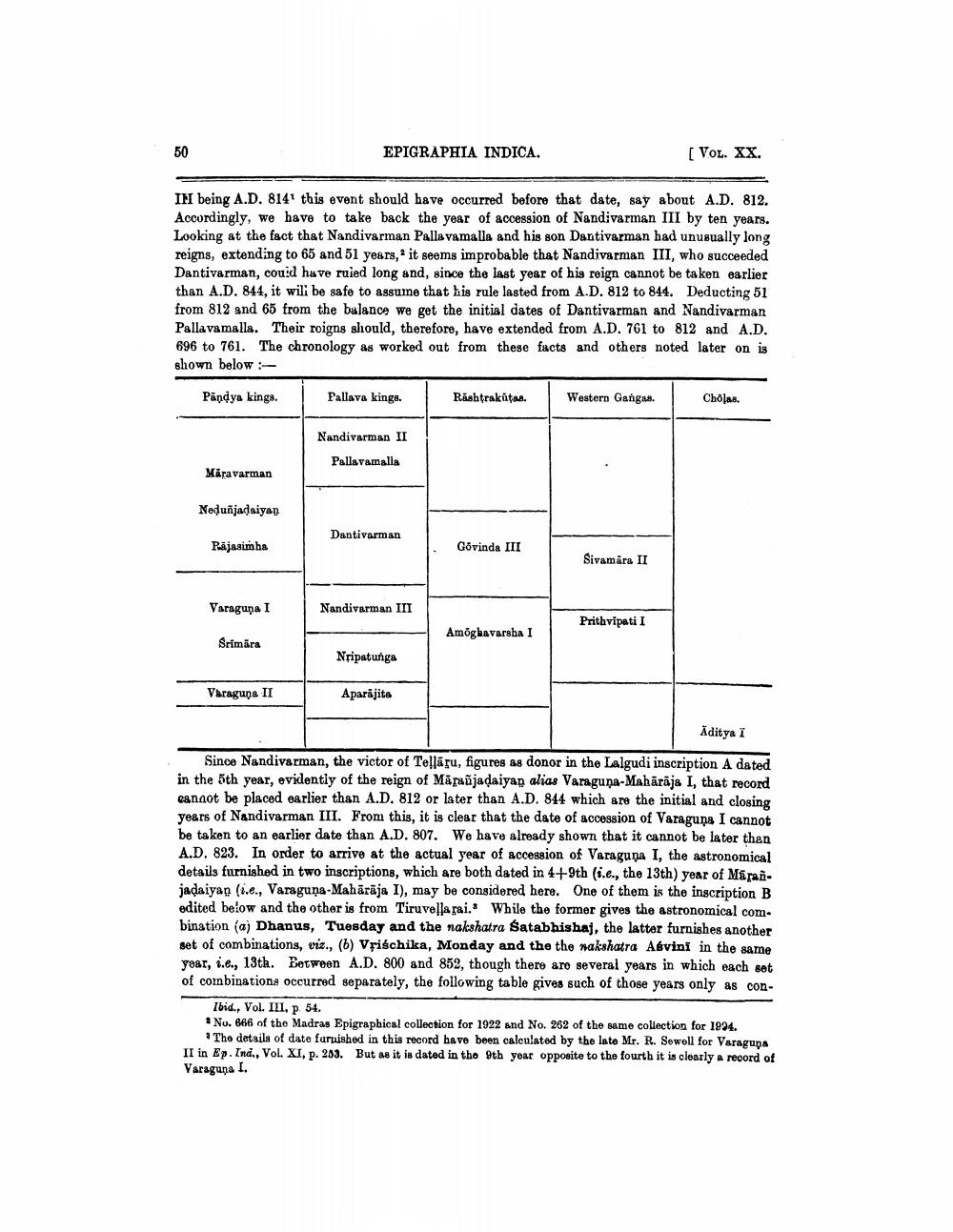________________
50
Māravarman
IHI being A.D. 8141 this event should have occurred before that date, say about A.D. 812. Accordingly, we have to take back the year of accession of Nandivarman III by ten years. Looking at the fact that Nandivarman Pallavamalla and his son Dantivarman had unusually long reigns, extending to 65 and 51 years, it seems improbable that Nandivarman III, who succeeded Dantivarman, could have ruied long and, since the last year of his reign cannot be taken earlier than A.D. 844, it will be safe to assume that his rule lasted from A.D. 812 to 844. Deducting 51 from 812 and 65 from the balance we get the initial dates of Dantivarman and Nandivarman Pallavamalla. Their reigns should, therefore, have extended from A.D. 761 to 812 and A.D. 696 to 761. The chronology as worked out from these facts and others noted later on is shown below:
Pandya kings.
Nedunjaḍaiyan
Rajasimha
Varaguna I
Śrimāra
EPIGRAPHIA INDICA.
Varaguna II
Pallava kings.
Nandivarman II
Pallavamalia
Dantivarman
Nandivarman III
Nripatunga
Aparajita
Rashtrakutas.
Govinda III
Amoghavarsha I
Western Gangas.
Šivamāra II
[VOL. XX.
Prithvipati I
Cholas.
Aditya Ï
Since Nandivarman, the victor of Tellāru, figures as donor in the Lalgudi inscription A dated in the 5th year, evidently of the reign of Marañjadaiyan alias Varaguna-Mahārāja I, that record cannot be placed earlier than A.D. 812 or later than A.D. 844 which are the initial and closing years of Nandivarman III. From this, it is clear that the date of accession of Varaguna I cannot be taken to an earlier date than A.D. 807. We have already shown that it cannot be later than A.D. 823. In order to arrive at the actual year of accession of Varaguna I, the astronomical details furnished in two inscriptions, which are both dated in 4+9th (i.e., the 13th) year of Marañjadaiyan (i.e., Varaguna-Mahārāja I), may be considered here. One of them is the inscription B edited below and the other is from Tiruvellarai. While the former gives the astronomical combination (a) Dhanus, Tuesday and the nakshatra Satabhishaj, the latter furnishes another set of combinations, viz., (b) Vrischika, Monday and the the nakshatra Aévini in the same year, i.e., 13th. Between A.D. 800 and 852, though there are several years in which each set of combinations occurred separately, the following table gives such of those years only as con
Ibid., Vol. III, p. 54.
3 No. 666 of the Madras Epigraphical collection for 1922 and No. 262 of the same collection for 1994.
The details of date furnished in this record have been calculated by the late Mr. R. Sewell for Varagupa II in Ep. Ind., Vol. XI, p. 203. But as it is dated in the 9th year opposite to the fourth it is clearly a record of Varaguna I.




